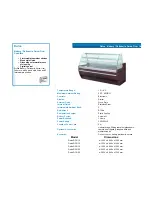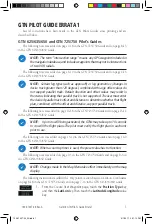
Variometer:
In order to make reading the altimeter easier, rising and falling are shown both by an analogue indicator and
digitally as a figure. The range displayed by the indicator finger goes up to ±8 m/s and in figures up to ±20 m/s.
The range shown by the finger is covered in the sector up to 4 m/s by being displayed in the relevant semi-circle
by the inner halves of the fingers with a full-length finger in front. Values from 4 to 8 m/s (8 to 16 x 100 FT/Min.)
are showed in the rest of the sector with full-length fingers.
Pointer mode
Sector mode
0-4m/s (0-8 x 100 FT/Min)
4-8m/s (8-16x100 FT/Min)
0 – 4 m/s
4 – 8 m/s
Audible variometer:
Rising is indicated by an audible signal issued at intervals with a changing frequency or by a continuous tone in
which the frequency changes in steps. The continuous tone indicates changes of 0.1 m/s (0,2 x 100 FT/Min.) and
is extremely useful in fine thermals.
The point at which the audible signal (CS) is set on can be adjusted.
It is set in the works for a rate-of-climb of +0.1 m/s and for a rate-of-sink of -0.1 m/s.
Type of audible warning:
Two types of interval can be set:
- intervals with a fixed length of tone and variable gaps
- intervals with the tone and the gaps of equal length and both changing at the same rate
The audible warning on the PRIMUS is as urgent as you require it to be. You have the choice between a quicker
(preferred by hanggliders) or a slower (preferred by paragliders) interval setting
In the works we set the audible warning at a slower interval with a equal Iength of tone and gaps between
the tones.









